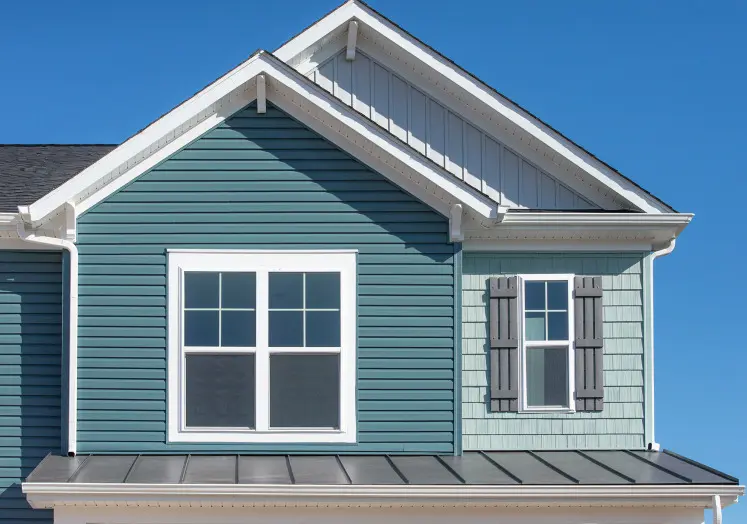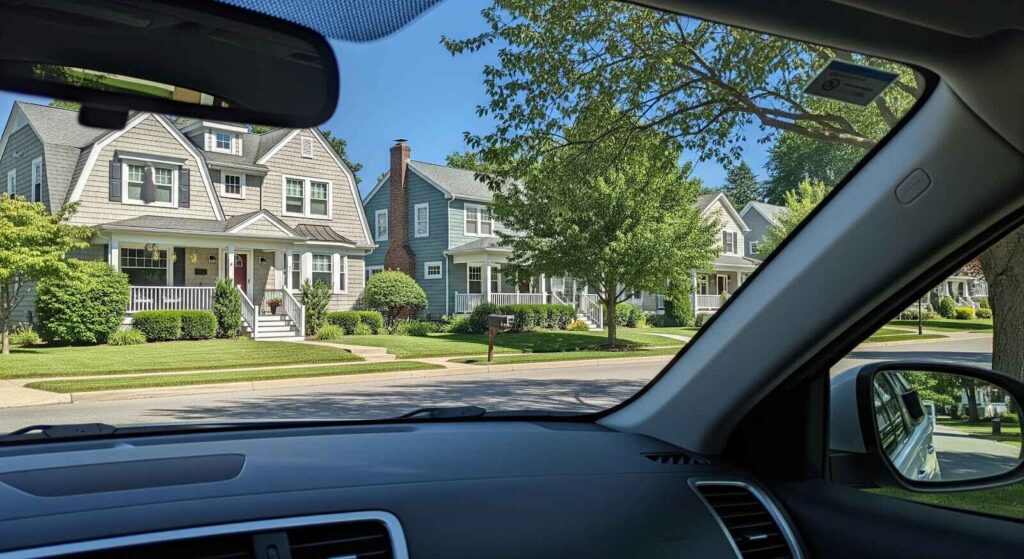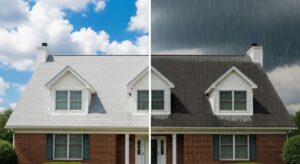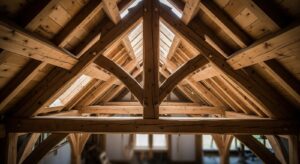If you’ve been wondering why Dutch lap siding continues to capture homeowners’ hearts decade after decade, you’re about to discover the perfect blend of historical charm and contemporary practicality that makes this siding style a top choice for discerning property owners.
Dutch lap represents just one of many excellent siding options available to homeowners, but its unique combination of classic appeal and modern performance has made it consistently popular across different architectural styles and regional preferences.
What Makes Dutch Lap Siding So Special?
Dutch lap siding stands out in the crowded world of exterior home materials thanks to its distinctive beveled edge design. Unlike traditional clapboard siding that lies flat, Dutch lap siding features a decorative groove or “lap” that creates depth and visual interest on your home’s exterior.
This unique profile isn’t just about aesthetics, it’s rooted in centuries of architectural tradition. Originally crafted by Dutch settlers in colonial America, this siding style was designed to shed water effectively while creating the shadow lines that give homes their characteristic depth and dimension.
Today’s Dutch lap siding maintains these traditional benefits while meeting modern performance standards. According to the Vinyl Siding Institute, properly installed Dutch lap siding provides superior weather protection compared to many flat siding profiles, making it both a beautiful and practical choice for contemporary homes.
The Anatomy of Dutch Lap Siding
The magic of Dutch lap siding lies in its carefully engineered profile. Each plank features:
- A beveled bottom edge that creates the signature shadow line
- A flat face that provides clean, classic lines
- Overlapping installation that ensures weather protection
- Variable width options to suit different architectural styles
When sunlight hits Dutch lap siding at different angles throughout the day, it creates an ever-changing play of light and shadow that brings your home’s exterior to life. This dynamic visual appeal is something that flat siding styles simply can’t replicate.
Why Homeowners Are Choosing Dutch Lap Over Other Siding Styles
Timeless Aesthetic Appeal
Among the various siding styles available today, Dutch lap consistently ranks as a favorite for its ability to complement both traditional and contemporary home designs. Whether you’re renovating a historic colonial or building a modern farmhouse, Dutch lap siding bridges the gap between classic charm and current trends.
The versatility extends to color choices as well. Gray vinyl siding in Dutch lap profile has become particularly popular, offering a sophisticated, neutral backdrop that pairs beautifully with white trim, natural stone accents, or bold front door colors.
Superior Weather Protection
The overlapping design of Dutch lap siding isn’t just for show. This time-tested installation method provides excellent protection against:
- Wind-driven rain and moisture infiltration
- Temperature fluctuations that can cause expansion and contraction
- UV damage from prolonged sun exposure
- Ice and snow buildup in colder climates
Enhanced Curb Appeal and Property Value
Real estate professionals consistently note that homes with quality siding, particularly distinctive styles like Dutch lap, tend to have higher curb appeal and market value. The classic look appeals to a broad range of potential buyers, making it a smart investment for long-term homeowners and those considering future resale.
Material Options: Finding the Perfect Dutch Lap Siding for Your Home
Vinyl Dutch Lap Siding: The Popular Choice
Vinyl has become the go-to material for Dutch lap siding, and for good reason. Modern vinyl formulations offer:
Durability Benefits:
- Fade-resistant color that lasts for decades
- Impact resistance against hail and debris
- No need for painting or staining
- Resistance to insects, rot, and moisture
Cost Effectiveness:
- Lower upfront material costs compared to wood or fiber cement
- Minimal maintenance requirements save money over time
- Energy efficiency options available with insulated backing
- Wide availability keeps costs competitive
When considering vinyl siding costs, Dutch lap typically falls in the middle range of vinyl options—more expensive than basic horizontal siding but less costly than premium shake or stone-look profiles.
Wood Dutch Lap Siding: Traditional Authenticity
For homeowners seeking authentic historical character, wood Dutch lap siding remains an attractive option. Cedar, pine, and engineered wood products offer:
- Natural grain patterns and texture
- Ability to stain or paint in custom colors
- Historical accuracy for restoration projects
- Renewable resource environmental benefits
However, wood requires more maintenance and comes with higher long-term costs for upkeep, painting, and potential repairs.
Fiber Cement Dutch Lap: Premium Durability
Fiber cement has gained popularity as a premium siding option that combines the look of wood with enhanced durability:
- Fire resistance for added safety
- Excellent paint adhesion and color retention
- Resistance to insects, rot, and moisture
- Lower maintenance than wood with better durability than vinyl

Cost Considerations: What You Need to Know About Dutch Lap Siding Investment
Understanding Vinyl Siding Costs
When homeowners ask “how much is vinyl siding,” the answer depends on several factors:
Material Grade and Quality:
- Basic vinyl Dutch lap: $3-6 per square foot
- Premium vinyl with enhanced durability: $6-9 per square foot
- Insulated vinyl Dutch lap: $7-12 per square foot
Installation Factors:
- Home size and complexity
- Regional labor costs
- Existing siding removal requirements
- Additional trim and accessory needs
Cost to Replace Vinyl Siding: Planning Your Investment
The cost to replace vinyl siding with Dutch lap typically ranges from $8,000 to $20,000 for an average-sized home, including materials and labor. This investment pays dividends through:
- Reduced maintenance costs over 20-30 years
- Improved energy efficiency with proper installation
- Enhanced curb appeal and property value
- Protection of your home’s structural elements
Long-term Value Analysis
Smart homeowners look beyond initial costs to consider long-term value. Dutch lap vinyl siding offers:
- 20-30 year lifespan with minimal maintenance
- Warranty coverage from reputable manufacturers
- Energy savings through improved insulation options
- Consistent performance in various climate conditions
Installation Excellence: Ensuring Your Dutch Lap Siding Performs
Professional Installation Advantages
While some homeowners consider DIY installation to save money, professional installation ensures:
Proper Technique:
- Correct overlap and spacing for weather protection
- Appropriate fastening to prevent warping or buckling
- Proper starter strips and corner treatments
- Code-compliant installation practices
Warranty Protection:
- Manufacturer warranties often require professional installation
- Contractor liability coverage for installation issues
- Access to professional-grade materials and tools
- Expert problem-solving for unique architectural challenges
Key Installation Considerations
Successful Dutch lap siding installation requires attention to:
- Proper house wrap and moisture barrier installation
- Adequate ventilation behind the siding
- Expansion and contraction allowances
- Flashing around windows, doors, and roof intersections
Color Trends and Design Ideas for Dutch Lap Siding
Popular Color Choices
Today’s homeowners are embracing both classic and contemporary color palettes for their Dutch lap siding:
Timeless Neutrals:
- Crisp whites for traditional colonial appeal
- Warm beiges and tans for welcoming earth tones
- Gray vinyl siding in various shades from light dove to charcoal
Contemporary Favorites:
- Deep blues for sophisticated coastal vibes
- Rich greens for harmony with natural landscapes
- Bold blacks for dramatic modern statements
Design Combinations That Work:
Dutch lap siding serves as an excellent foundation for various design elements:
- Stone or brick wainscoting for textural contrast
- Board and batten vinyl siding accents on gables or dormers for striking architectural contrast
- Contrasting trim colors to highlight architectural details
- Mixed materials for contemporary farmhouse aesthetics
Maintenance and Care: Keeping Your Dutch Lap Siding Beautiful
Simple Maintenance Routine
One of the biggest advantages of vinyl Dutch lap siding is its low maintenance requirements:
Annual Tasks:
- Gentle pressure washing to remove dirt and mildew
- Visual inspection for damaged or loose panels
- Cleaning gutters to prevent water overflow
- Trimming vegetation away from siding surfaces
Periodic Maintenance:
- Touch-up caulking around trim and openings
- Replacement of damaged panels as needed
- Professional inspection every 5-7 years
- Gutter maintenance to protect siding from water damage
Troubleshooting Common Issues
Even quality Dutch lap siding can experience occasional problems:
- Fading from UV exposure (covered by many manufacturer warranties)
- Impact damage from severe weather or debris
- Expansion and contraction issues in extreme temperatures
- Color matching challenges for repairs or additions
Environmental Impact and Sustainability
Eco-Friendly Aspects of Modern Vinyl Siding
Today’s vinyl Dutch lap siding offers several environmental benefits:
- Recyclable at end of life cycle
- Energy-efficient manufacturing processes
- Long lifespan reduces replacement frequency
- Available with recycled content options
Energy Efficiency Considerations
Dutch lap siding can contribute to your home’s energy efficiency through:
- Insulated backing options for improved thermal performance
- Proper installation that reduces air infiltration
- Light-colored options that reflect heat in summer
- Durable construction that maintains performance over time
When selecting energy-efficient siding options, look for products that meet ENERGY STAR guidelines for thermal performance. Insulated Dutch lap siding can significantly improve your home’s overall energy rating while maintaining the classic aesthetic appeal homeowners love.
Frequently Asked Questions About Dutch Lap Siding
What’s the difference between Dutch lap and clapboard siding?
Dutch lap siding features a decorative groove or bevel along the bottom edge that creates shadow lines, while clapboard siding has a flat profile. This groove gives Dutch lap its distinctive layered appearance and enhanced visual depth.
How long does Dutch lap vinyl siding last?
Quality Dutch lap vinyl siding typically lasts 20-30 years with proper installation and minimal maintenance. Many manufacturers offer warranties of 20-40 years, reflecting confidence in the material’s durability.
Can Dutch lap siding be installed over existing siding?
In some cases, Dutch lap vinyl siding can be installed over existing siding, but this depends on the condition and type of existing material. Professional assessment is recommended to ensure proper installation and performance.
Is Dutch lap siding more expensive than regular vinyl siding?
Dutch lap siding typically costs slightly more than basic horizontal vinyl siding due to its more complex profile and manufacturing process. However, the price difference is usually modest compared to the enhanced aesthetic appeal.
What maintenance does Dutch lap siding require?
Dutch lap vinyl siding requires minimal maintenance, primarily annual cleaning with soap and water or gentle pressure washing. Unlike wood siding, it doesn’t need painting, staining, or sealing.
Can Dutch lap siding help with energy efficiency?
Yes, especially when choosing insulated Dutch lap siding options. The continuous insulation backing can improve your home’s thermal performance and reduce energy costs.
Making the Right Choice: Is Dutch Lap Siding Right for Your Home?
Dutch lap siding represents an ideal intersection of classic American architectural tradition and modern material technology. Its distinctive profile creates the kind of visual interest and curb appeal that makes homes stand out in the best possible way.
For homeowners who appreciate timeless design elements that won’t look dated in ten or twenty years, Dutch lap siding offers the perfect solution. The combination of low maintenance, excellent weather protection, and enhanced aesthetic appeal makes it a smart choice for both new construction and renovation projects.
Whether you’re drawn to the crisp look of white Dutch lap siding on a colonial-style home or the sophisticated appeal of gray vinyl siding on a contemporary design, this classic profile adapts beautifully to your vision.
Ready to Transform Your Home with Dutch Lap Siding?
Your home deserves the timeless appeal and lasting protection that Dutch lap siding provides. Don’t let another season pass with outdated or deteriorating exterior walls that fail to reflect your home’s true potential.
Take the next step toward enhancing your home’s curb appeal and value:
- Get multiple quotes from licensed contractors in your area to compare vinyl siding costs and installation options
- Schedule consultations to see Dutch lap samples in person and discuss color options that complement your home’s architecture
- Ask about warranty coverage and maintenance requirements to ensure long-term satisfaction
- Consider timing your project during contractors’ slower seasons for potential cost savings
Contact local siding professionals today to discover how Dutch lap siding can transform your home into the neighborhood standout you’ve always envisioned. Your future self, and your property value, will thank you for making this classic choice.
Ready to explore your Dutch lap siding options? Start by requesting quotes from certified contractors in your area and take the first step toward your home’s beautiful transformation.






